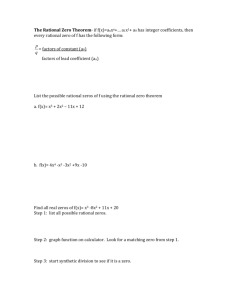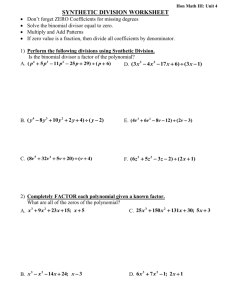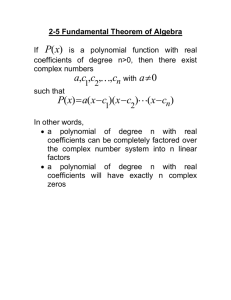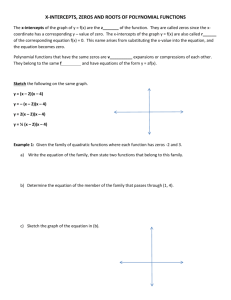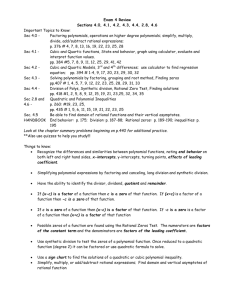Polynomial Zeros
advertisement
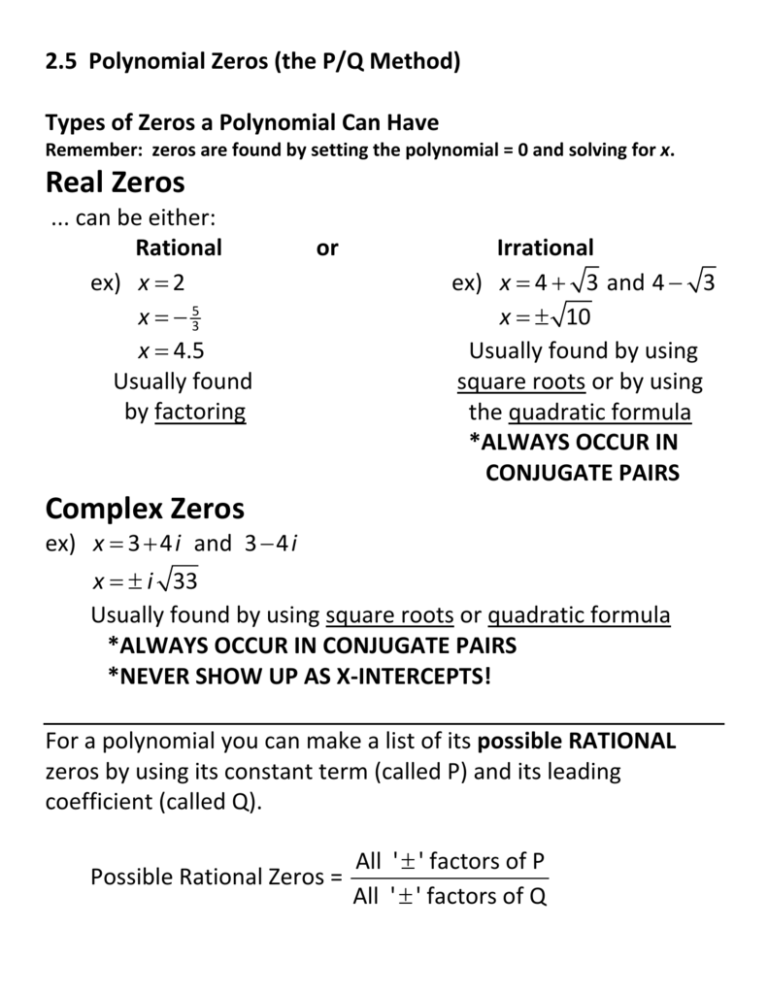
2.5 Polynomial Zeros (the P/Q Method) Types of Zeros a Polynomial Can Have Remember: zeros are found by setting the polynomial = 0 and solving for x. Real Zeros ... can be either: Rational ex) x = 2 x = − 35 x = 4.5 Usually found by factoring or Irrational ex) x = 4 + 3 and 4 − 3 x = ± 10 Usually found by using square roots or by using the quadratic formula *ALWAYS OCCUR IN CONJUGATE PAIRS Complex Zeros ex) x = 3 + 4 i and 3 − 4 i x = ± i 33 Usually found by using square roots or quadratic formula *ALWAYS OCCUR IN CONJUGATE PAIRS *NEVER SHOW UP AS X‐INTERCEPTS! For a polynomial you can make a list of its possible RATIONAL zeros by using its constant term (called P) and its leading coefficient (called Q). Possible Rational Zeros = All ' ± ' factors of P All ' ± ' factors of Q ex) List all the possible rational zeros for the polynomial 2 x 4 + 3x 3 − 11x 2 − 9 x + 15 ex) Which of these possible rational zeros show up as actual x‐ intercepts on the graph of f (x) = 2 x 4 + 3x 3 − 11x 2 − 9 x + 15 ? *Use your calculator to check by using TRACE ex) Use synthetic division to ‘take out’ each rational zeros and get the degree of the quotient down to a quadratic to isolate the remaining zeros. ex) Find all the zeros for the polynomial f (x) = 2 x 3 − 3x 2 + 20 x − 30 1st: make the P/Q list 2nd: locate all RATIONAL zeros by looking at the graph 3rd: use synthetic division to take out all rational zeros 4th: set the quotient = 0 and solve for the remaining zeros. ex) Find all the zeros for the polynomial f (x) = x 4 − 4 x 3 − x 2 + 14 x + 10 1st: make the P/Q list 2nd: locate all RATIONAL zeros by looking at the graph 3rd: use synthetic division to take out all rational zeros 4th: set the quotient = 0 and solve for the remaining zeros. ex) Construct a polynomial f (x) of degree 4 having these zeros: x = −4 , x = 35 and x = 2 i * Make sure it has integer coefficients! * When finished check to see if f (1) = 50


